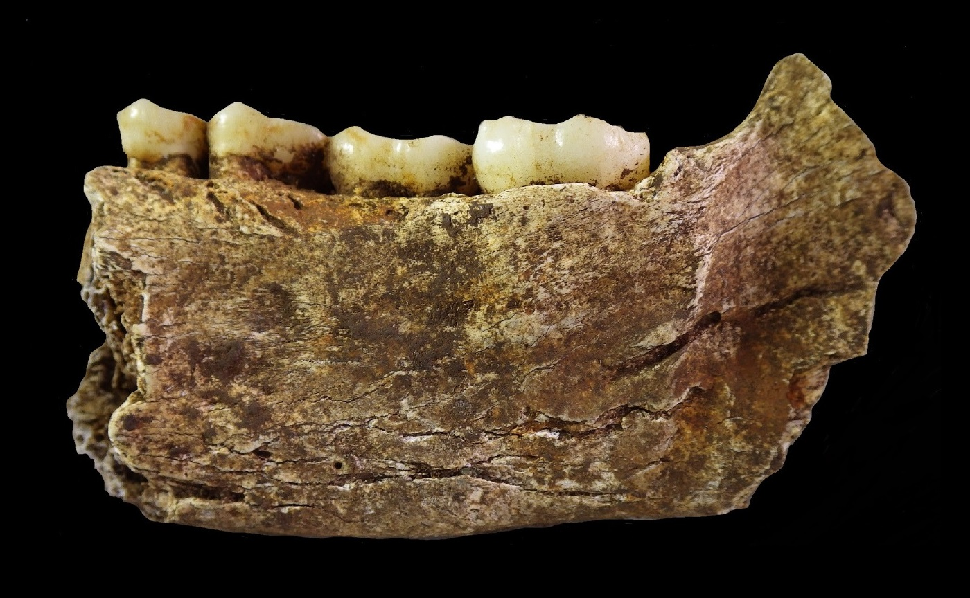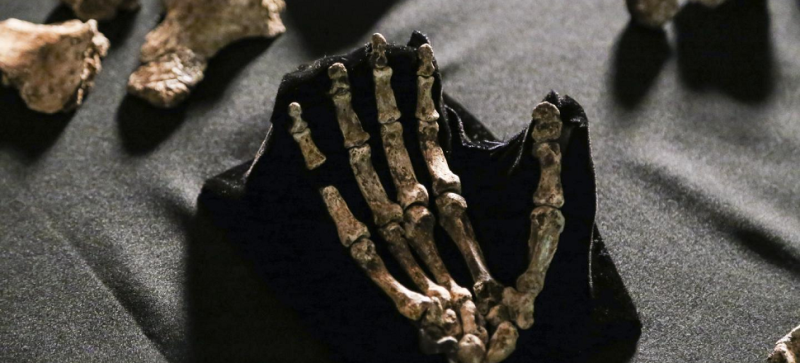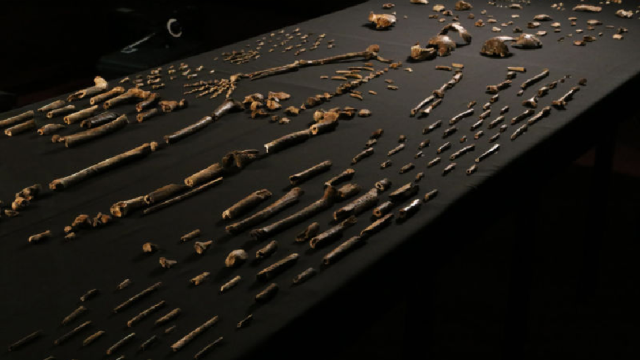Homo naledi, the newly discovered species of early hominin announced last month, is drawing a lot of fire from paleoanthropologists.
For one thing, there’s still debate over whether Homo naledi is actually a new species at all. Some anthropologists, like Jeffrey Schwarz, say the specimens look more like an early human ancestor from a whole other genus, Australopithecus. Others, like Tim White, say the fossils discovered near Johannesburg, South Africa, probably belong to Homo erectus. White says that Homo naledi discoverer Lee Berger made some basic mistakes.
Meanwhile, some in the field have criticised Berger’s inability to date his find, while others are challenging Berger’s claims that the remains in Rising Star Cave had been buried deliberately.
But that debate is possible in the first place only because Berger published his work much more quickly than is normal, in an open access journal, and made digital scans of his specimens immediately available for download or 3D printing.
The whole point of scientific publication is that, when you publish, you’re putting your data and your methods out there for other scientists to see and comment on – and to judge. In theory, scientists are supposed to read these papers and basically check each other’s work.
The storm of controversy around Berger’s actual conclusions is what’s supposed to happen in the scientific community.
It Takes A Long Time to Say Anything in Paleoanthropology

Image credit: Patrick Randolph-Quinney (2015). “A new star rising: Biology and mortuary behaviour of Homo naledi”. South African Journal of Science 111 (9/10).
Paleoanthropology, to an even greater extent than most scientific fields, moves slowly. Think Treebeard and the other Ents from Lord of the Rings. When a field expedition finds a specimen, it can take another ten or fifteen years for the researchers to share their findings with the rest of the scientific community – and the general public – by publishing in a journal.
To some extent, that makes sense. Excavating a fossil site requires careful work and lots of documentation – partly because the fossils themselves are very fragile, and partly because it’s important to preserve information about where the fossils were in relation to each other, and which layer of soil they were found in. That information helps researchers date the fossils and reconstruct what may have happened at the site. It can take several seasons in the field to do it properly.
Then, old-school paleontologists contend, it takes even more time to analyse the fossils, compare them to other specimens, and triple-check their work.
The thing is, paleontologists (like scientists in other fields) are often very possessive of their specimens and their data. So while a handful of very senior paleontologists are taking ten years to interpret the fossils, usually no one else gets to look at them. They’re usually not sharing the specimens – even casts or digital scans of them – or the data with other scientists.
So paleontologists work this way for a decade before finally being sure enough about their conclusions to publish them, usually accompanied by photographs tables of measurements. Even after publication, it can take several more years to make casts of the fossils and distribute them to other researchers, or teachers, who might want a hands-on look at the specimens.

John Hawks via Wikimedia Commons
Berger broke that tradition by publishing his work in just two years and releasing digital scans of the fossils that anyone can use to 3D print replicas of the specimens. That was an unprecedented move, and some in the field were glad to see it.
There may well be substance to detractors’ claims that Berger rushed through his excavation and his research, partly to suit the timeframe of National Geographic filming crews. There may be substance to their claims that eLife’s peer review process was lax enough to allow publication of a paper riddled with errors. If so, those things will be evident in the quality of the expedition’s work, which is easy to evaluate: all the data is right out there in the open, in great detail, for anyone who wants to check, verify, or debunk it. And that’s how science is supposed to work.
And the whole debate is playing out, to a large extent, in the popular media, from Berger’s work with National Geographic to his critics’ pieces in Time and Newsweek. The public is watching, and that shelds light not only on the field of paleoanthropology but on the basic nature of scientific debate.
Even if it turns out that Berger and his team got everything else wrong, they got that part right.
Top image: John Hawks_Wits University/CC
